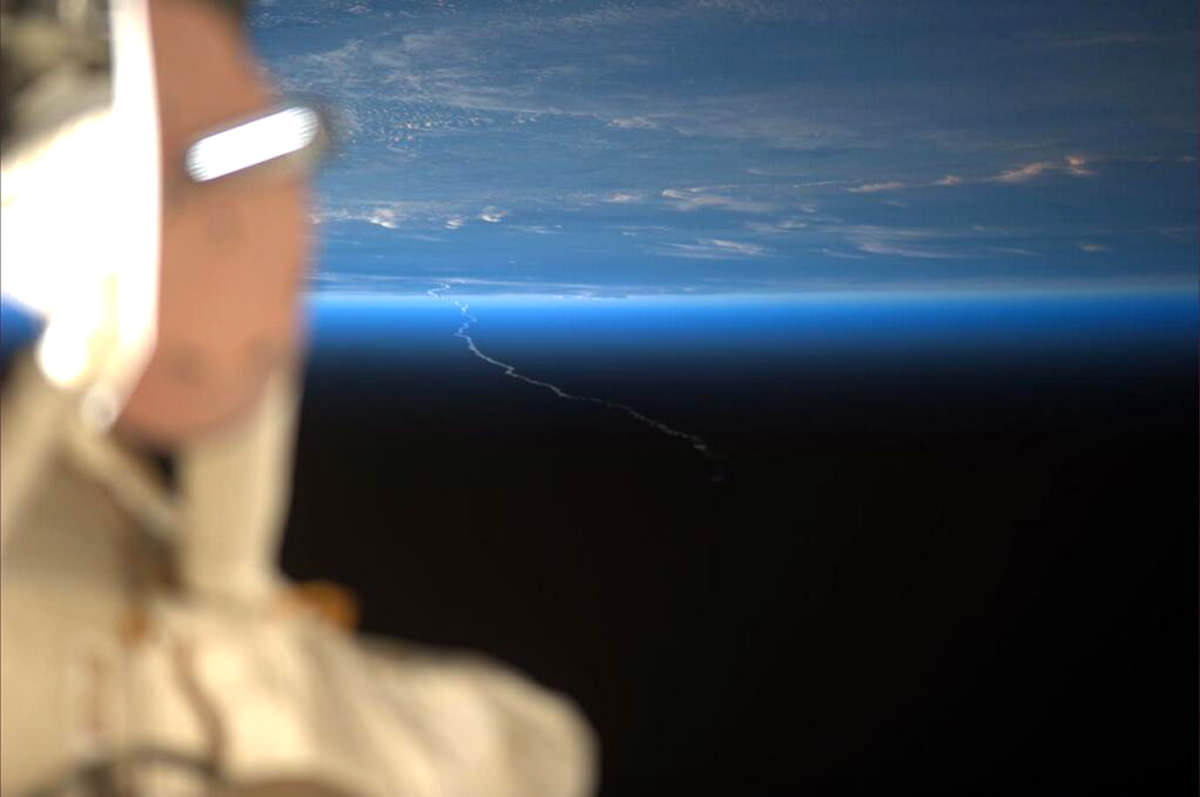Around this time last year a space rock crashed into the Earth above Chelyabinsk, Russia. It brightened the skies for hundreds of kilometers, broke windows and injured many people. Let’s look back at the event. What happened, and what did we learn?
Continue reading “Astronomy Cast Ep. 334: Chelyabinsk”
Astronomy Cast Ep. 333: When Worlds Collide
Just take a look at the surface of the Moon and you can see it experienced a savage beating in the past. Turns out, the whole Solar System is a cosmic shooting gallery, with stuff crashing into other stuff. It sure sounds violent, but then, we wouldn’t be here without it.
Continue reading “Astronomy Cast Ep. 333: When Worlds Collide”
Amazing Astrophoto: Aurora Through the Dome
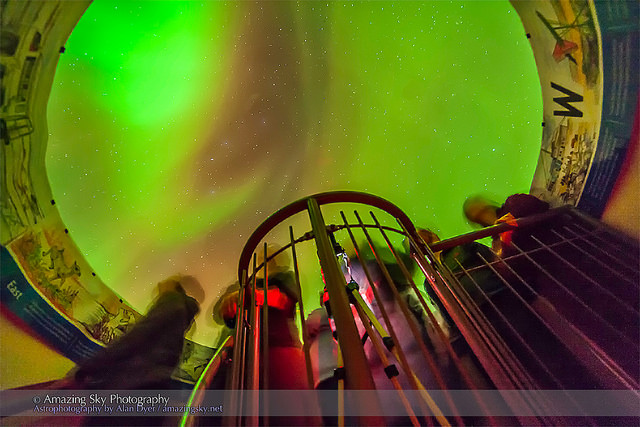
There are not many places where you can be indoors and have a spectacular view of the Aurora Borealis, but the Churchill Northern Studies Centre in Canada is one. This incredible shot of the the aurora was taken from inside a plexiglass dome created specifically for being able to watch the sky from indoors. Astrophotographer Alan Dyer described it as “a warm way to watch the aurora.”
This view is a 30-second exposure looking up through the dome. Below you can see how the aurora looked from outsdoors, which is stunning as well.
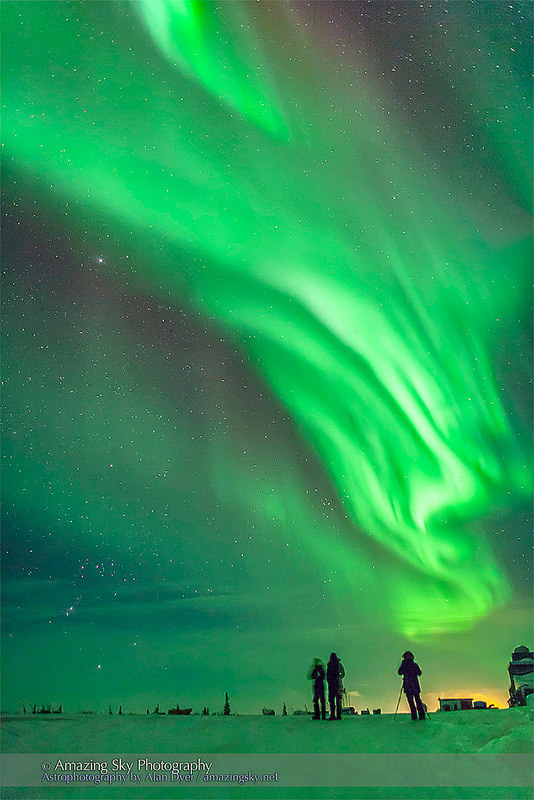
The Churchill Northern Studies Centre non-profit research and education facility located 23 km east of the town of Churchill, Manitoba that supports sub-arctic scientific researchers working on “a diverse range of topics of interest to northern science,” in addition to being an educational resource center for schools.
Thanks to Alan for sharing his images from his aurora experience at the Centre, and you can see more on Alan’s Flickr page or his website.
Weekly Space Hangout – February 7, 2014: New Impact on Mars & A Wobbly Planet
Host: Fraser Cain
Astrojournalists: Scott Lewis, Nicole Gugliucci, Morgan Rehnberg, Brian Koberlein, Elizabeth Howell, Amy Shira Teitel, David Dickinson
This Week’s Stories!
Morgan Rehnberg (cosmicchatter.org / @cosmic_chatter):
New Mars impact crater
Nicole Gugliucci (cosmoquest.org / @noisyastronomer):
Weird Asteroid Itokawa Has a Dual Personality
Shiny new radio image of M82 (but no supernova afterglow)
David Dickinson (@astroguyz):
Venus in 2014
Progress+launches for February
Space History-Curious Artifacts Sent Into Space
Elizabeth Howell (@howellspace):
Astronomy Podcast Enters Sixth Year — And We’d Love For You To Contribute!
Super-Earths Could Be More ‘Superhabitable’ Than Planets Like Ours
Brian Koberlein (@briankoberlein); Scott Lewis (@baldastronomer); & Elizabeth Howell (@howellspace):
‘Wobbly’ Alien Planet Has Weird Seasons And Orbits Two Stars
Amy Shira Teitel (@astVintageSpace):
When galaxies collide!
Scott Lewis (@baldastronomer):
Gaia
We record the Weekly Space Hangout every Friday at 12:00 pm Pacific / 3:00 pm Eastern. You can watch us live on Google+, Universe Today, or the Universe Today YouTube page.
Kapow! Black Hole’s Jet Highlights A Galactic ‘Dust Lane’ 12 Million Light-Years Away

This image, right here, shows us the value of long-term observations. It’s a composite of pictures taken between 1999 and 2012 from NASA’s Chandra X-ray Telescope. Put 9.5 days’ worth of observations together, and you can see a lot of action in Centaurus A — namely, a huge jet emanating from a ginormous black hole embedded in the galaxy.
“As in all of Chandra’s images of Cen A, this one shows the spectacular jet of outflowing material – seen pointing from the middle to the upper left – that is generated by the giant black hole at the galaxy’s center. This new high-energy snapshot of Cen A also highlights a dust lane that wraps around the waist of the galaxy. Astronomers think this feature is a remnant of a collision that Cen A experienced with a smaller galaxy millions of years ago,” NASA stated.
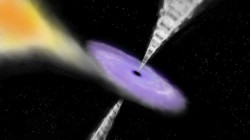
A past survey of X-ray sources in Cen A revealed that most of them are black holes or neutron stars (the latter created from the wake of a huge star’s collapse). It seems that most of these sources are either less than twice the mass of the sun, or more than five times as massive. Here’s the more interesting bit: the smaller ones appear to be neutron stars, and the bigger ones black holes.
“This mass gap may tell us about the way massive stars explode. Scientists expect an upper limit on the most massive neutron stars, up to twice the mass of the Sun,” NASA added.
“What is puzzling is that the smallest black holes appear to weigh in at about five times the mass of the Sun. Stars are observed to have a continual range of masses, and so in terms of their progeny’s weight we would expect black holes to carry on where neutron stars left off.”
The 2013 paper is available both in The Astrophysical Journal and in preprint version on Arxiv.
How A Laser Appears To Move Faster Than Light (And Why It Really Isn’t)
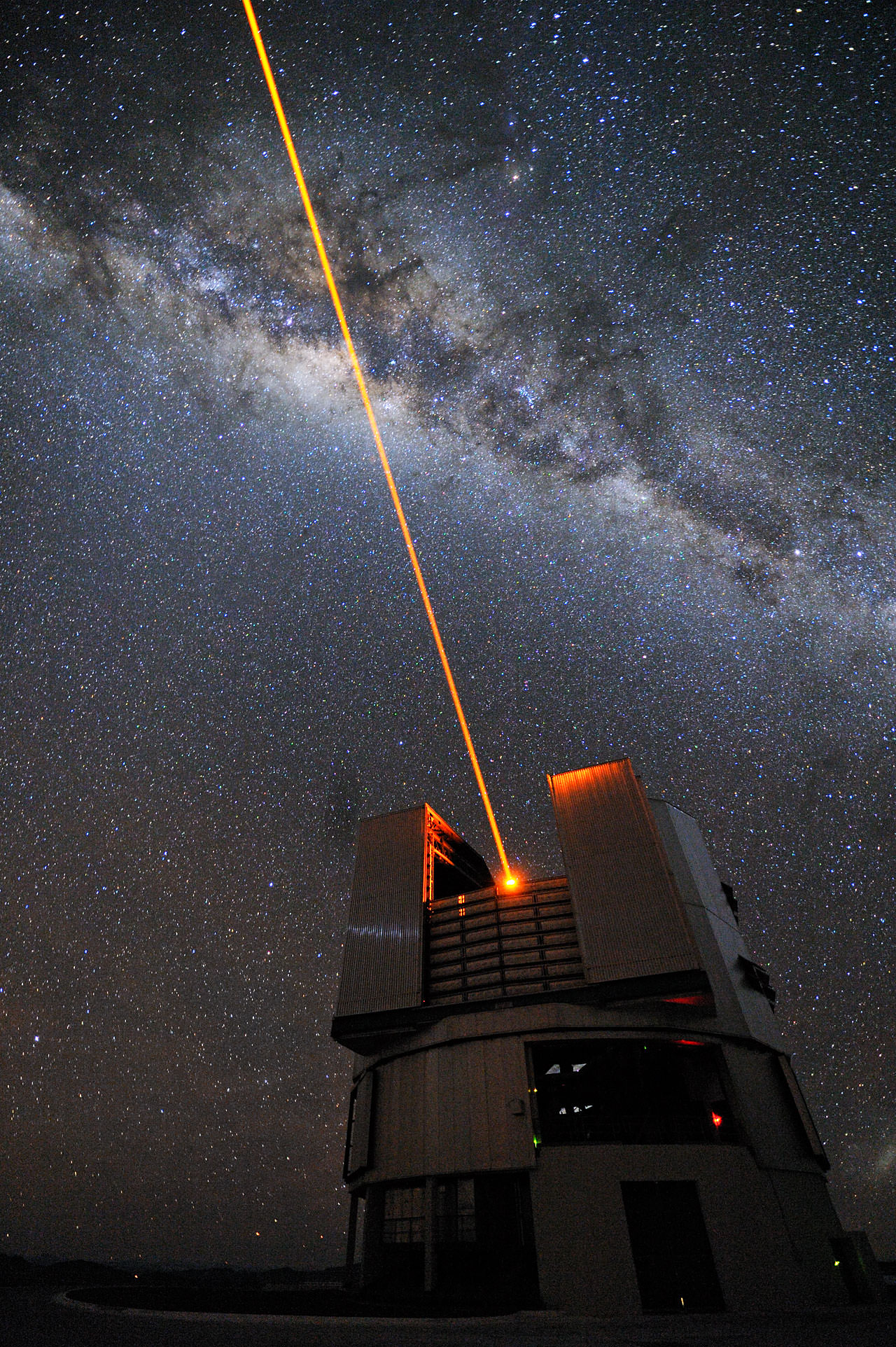
We at Universe Today often hear theories purporting that Einstein is wrong, and perhaps one of the most common things cited is the speed limit for light used in his relativity theories. In a vacuum, light goes close to 300,000 km/s (roughly 186,000 miles a second). Using a bit of geometry, however, isn’t there a way to make it go faster? This video below shows why you’d think it would work that way, but it actually wouldn’t.
“There is a classic method where you shine a laser at the moon. If you can flick that beam across the moon’s surface in less than a hundredth of a second, which is not hard to do, then that laser spot will actually move across the surface of the moon faster than the speed of light,” says the host on this Veritasium video.
“In truth, nothing here is really travelling faster than the speed of light. The individual particles coming out of my laser, the photons, are still travelling to the moon at the speed of light. It’s just that they’re landing side by side in such quick succession that they form a spot that moves faster than the speed of light, but really, it’s just an illusion.”
There are way more ways that light can appear to move faster than the cosmic video, and you can check out more of those in the video.
Robots And Astronauts Feature In First Glimpse of Canada’s New Space Policy
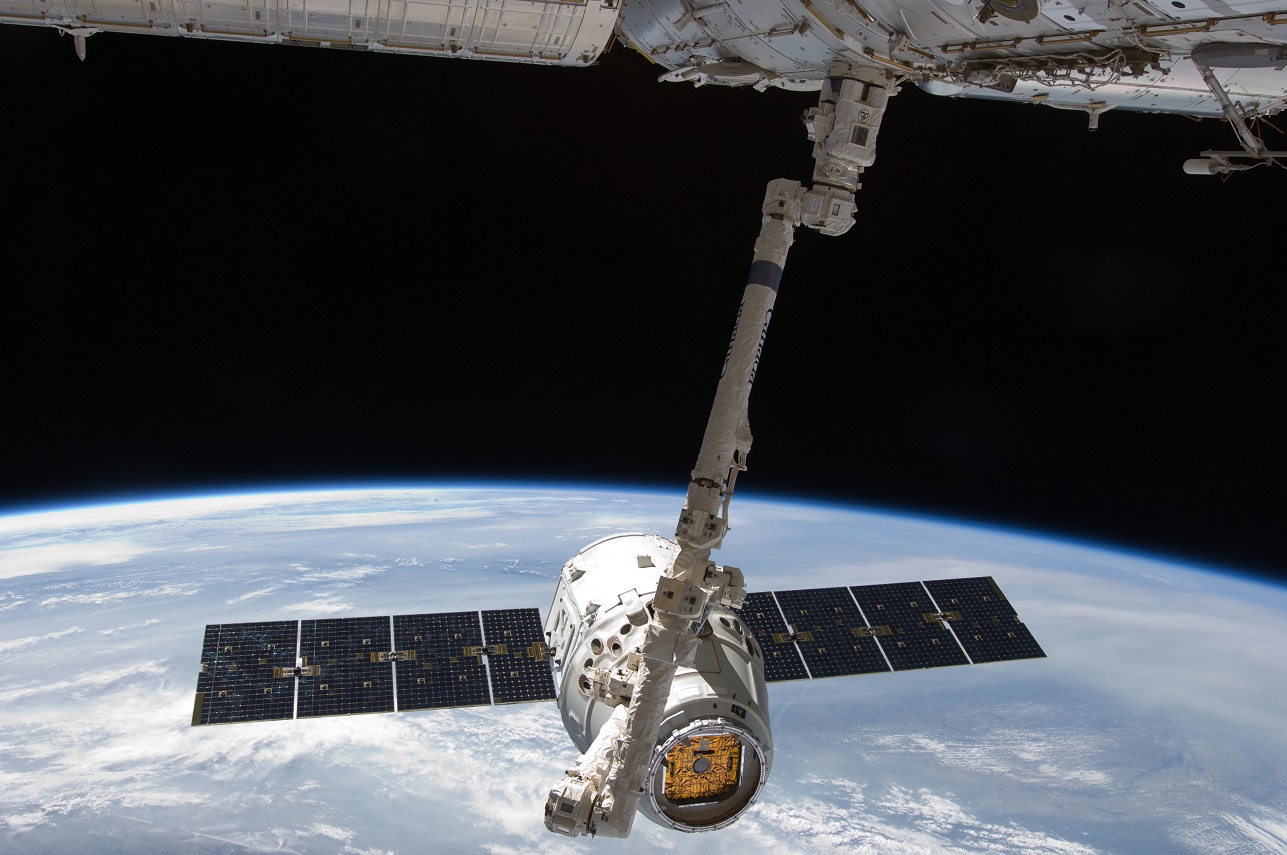
About six years ago, the Canadarm — Canada’s iconic robotic arm used in space — was almost sold to a company in the United States, along with other space technology from MacDonald, Dettwiler and Associates. The Canadian government blocked the sale and swiftly came out with a promise: a space policy to better support Canada’s industry.
That promise was made in September 2008. “Time is of the essence,” then-Industry Minister Jim Prentice told reporters upon announcing a space policy would be created. Today, 65 months later, the government released the high-level framework of that policy. Astronauts, telescopes and yes, the Canadarm are all prominently mentioned in there.
A lot has happened in six years. Policy-makers used to cite successor Canadarm2’s role in space station construction. Now the arm also does things that were barely imaginable in 2008 — namely, berthing commercial spacecraft such as SpaceX’s Dragon at the International Space Station. It shows how quickly space technology can change in half a decade.
At 13 pages, there isn’t a lot of information in Canada’s framework yet to talk about, but there are some statements about government priorities. Keep the astronaut program going (which is great news after the success of Chris Hadfield). A heavy emphasis on private sector collaboration. And a promise to keep funding Canada’s contribution to the James Webb Space Telescope, NASA’s next large observatory in space.
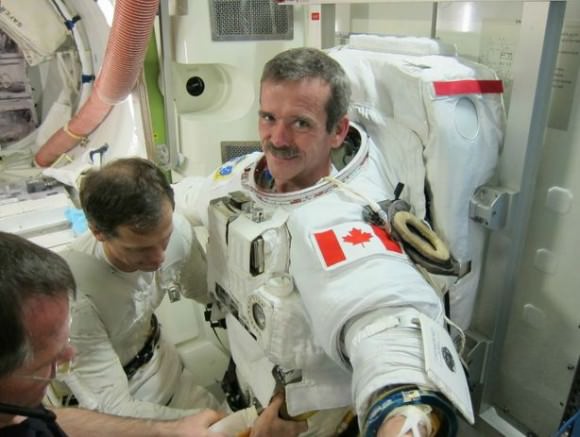
These are the Top 5 priorities listed in the plan:
- Canada First: Serving Canada’s interests of “sovereignty, security and prosperity.” As an example: The country has a huge land-mass that is sparsely populated, so satellites are regularly used to see what ship and other activity is going on in the territories. This is a big reason why the Radarsat Constellation of satellites is launching in 2018.
- Working together globally: Canada has a tiny space budget ($488.7 million in 2013-14, $435.2 million in 2014-15 and $382.9 million in 2015-16), so it relies on other countries to get its payloads, astronauts and satellites into space. This section also refers to Canada’s commitment to the International Space Station, which (as with other nations) extends to at least 2024. That’s good news for astronauts Jeremy Hansen and David Saint-Jacques, who are waiting for their first trip there.
- Promoting Canadian innovation: The James Webb Telescope (to which Canada is contributing optics and a guidance system) is specifically cited here along with the Canadarm. Priority areas are Canada’s historic strengths of robotics, optics, satellite communications, and space-based radar, as well as “areas of emerging expertise.”
- Inspiring Canadians: Basically a statement saying that the government will “recruit, and retain highly qualified personnel,” which in more real terms means that it will need to keep supporting Canadian space companies financially through contracts, for example, to make this happen.
That last point in particular seemed to resonate with at least one industry group.
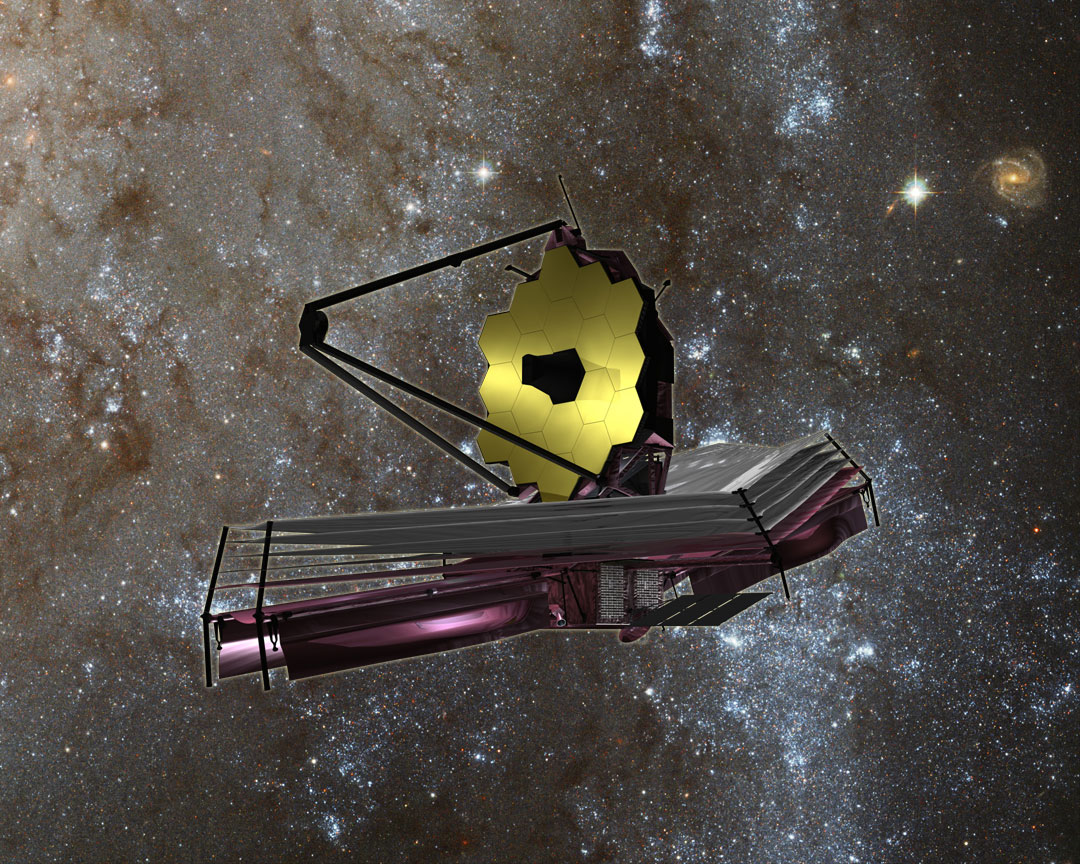
“A long-term strategic plan for Canada’s space program is critical for our industry. In order to effectively invest in innovation, technology and product development, we rely heavily on knowing what the government’s priorities for the space program are,” stated Jim Quick, president of the Aerospace Industries Association of Canada (a major group that represents the interests of private space companies.)
While we wait for more details to come out, here’s some valuable background reading. The space-based volume of the Emerson Report (the findings of a government-appointed aerospace review board listed in 2012) called for more money for and more stable funding of the Canadian Space Agency, among other recommendations.
And here’s the government’s point-by-point response in late 2013. In response to funding: “The CSA’s total funding will remain unchanged and at current levels. The government will also leverage existing programs to better support the space industry.” Additionally, the CSA’s space technologies development program will be doubled to $20 million annually by 2015-16, which is still below the Emerson report’s recommendation of adding $10 million for each of the next three years.
What are your thoughts on the policy? Let us know in the comments.
How Can We Find Killer Asteroids?
On the morning of February 15, 2013, people in western Russia were dazzled by an incredibly bright meteor blazing a fiery contrail across the sky. A few minutes later a shockwave struck, shaking the buildings and blowing out windows. 1,500 people went to the hospital with injuries from shattered glass. This was the Chelyabinsk meteor, a chunk of rock that struck the atmosphere going almost 19 kilometers per second. Astronomers estimate that it was 15-20 meters across and weighed around 12,000 metric tonnes.
Here’s the crazy part. It was the largest known object to strike the atmosphere since the Tunguska explosion in 1908. Catastrophic impacts have shaped the evolution of life on Earth. Once every 65 million years or so, there’s an impact so destructive, it wipes out almost all life on Earth. The bad news is the Chelyabinsk event was a surprise. The asteroid came out of nowhere. We need to find all the potential killer asteroids, and understand what risks we face.
“I’m Ned Wright…”
That’s Dr. Ned Wright. He’s a professor of physics and astronomy at UCLA, and the Primary Investigator for the Wide-field Infrared Survey Explorer mission; a space telescope that looks for low temperature objects in the infrared spectrum.
“I think the best way to protect the Earth from asteroids is to get out and look very assiduously to find all the hazardous asteroids. Although astronomers have been finding and cataloging asteroids for decades, we still only have a fraction of the dangerous asteroids tracked. The large continent destroyers have mostly been found, but there’s a whole class of smaller, city killers out there, and they’re almost entirely unknown. There are… these dark asteroids that may not be the most dominant part of the population but they certainly can be a very hazardous subset, it’s important to do the observations in the infrared. So you actually, instead of looking for the ones that reflect the most light, you look for the ones that have the biggest area and therefore the ones that are the heaviest and can do the most damage. And so, I think that an infrared survey is the way to go.”
“In the infrared wavelengths, we can find these objects because they’re large, not because they’re bright. And to really do this right, we need a space-based infrared observatory capable of surveying vast areas of the sky, searching for anything moving.”
The WISE mission has been offline for a few years, but WISE is actually being reactivated right now to look for more Near Earth Objects, so we’re currently cooled down to 93 K, and when we get to 73 K, which is where we were when we turned off in 2011 we’ll probably be able to go out and find more Near Earth Objects.
Note: this interview was recorded in November, 2013. WISE resumed operations in December 23, 2013
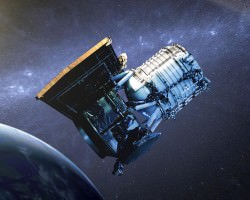
But to really find the vast majority of dangerous asteroids, you need a specialized mission. One proposal is the Near Earth Asteroid Camera, or NEOCam because it’d be much better to have a telescope that was slightly colder than the 73 K WISE is with coolant, and you can do that by getting away from the Earth. and so the NEOcam telescope is designed to go a million and a half kilometers from the Earth and therefore it would be quite cold, about 35 K and at that temperature, it can operate longer into the infrared and do a very sensitive survey for asteroids.
NEOCam is just one idea. There’s also the Sentinel proposal from B612 Foundation. It’s also an infrared survey and it would go into an orbit like Venus’ orbit, so it would be hundreds of millions of km away from Earth, but not orbiting around Venus, because that would be too hot as well and then with an infrared telescope, it would survey for asteroids.
NEOCam and Sentinel would operate for years, scanning the sky in the infrared to find all of the really hazardous asteroids. You wouldn’t be able to necessarily find the ones the size of the one that hit Chelyabinsk, and so that broke some windows, but it didn’t kill people, didn’t knock buildings down. So that’s definitely a hazard, but not the city destroying hazard that a 100 meter diameter asteroid would be.
We live in a cosmic shooting gallery. Rocks from space impact the Earth all the time, our next dangerous asteroid is out there, somewhere. Let’s build a space-based infrared survey mission so we can find it, before it finds us.
You are Here! Curiosity’s 1st Photo of Home Planet Earth from Mars
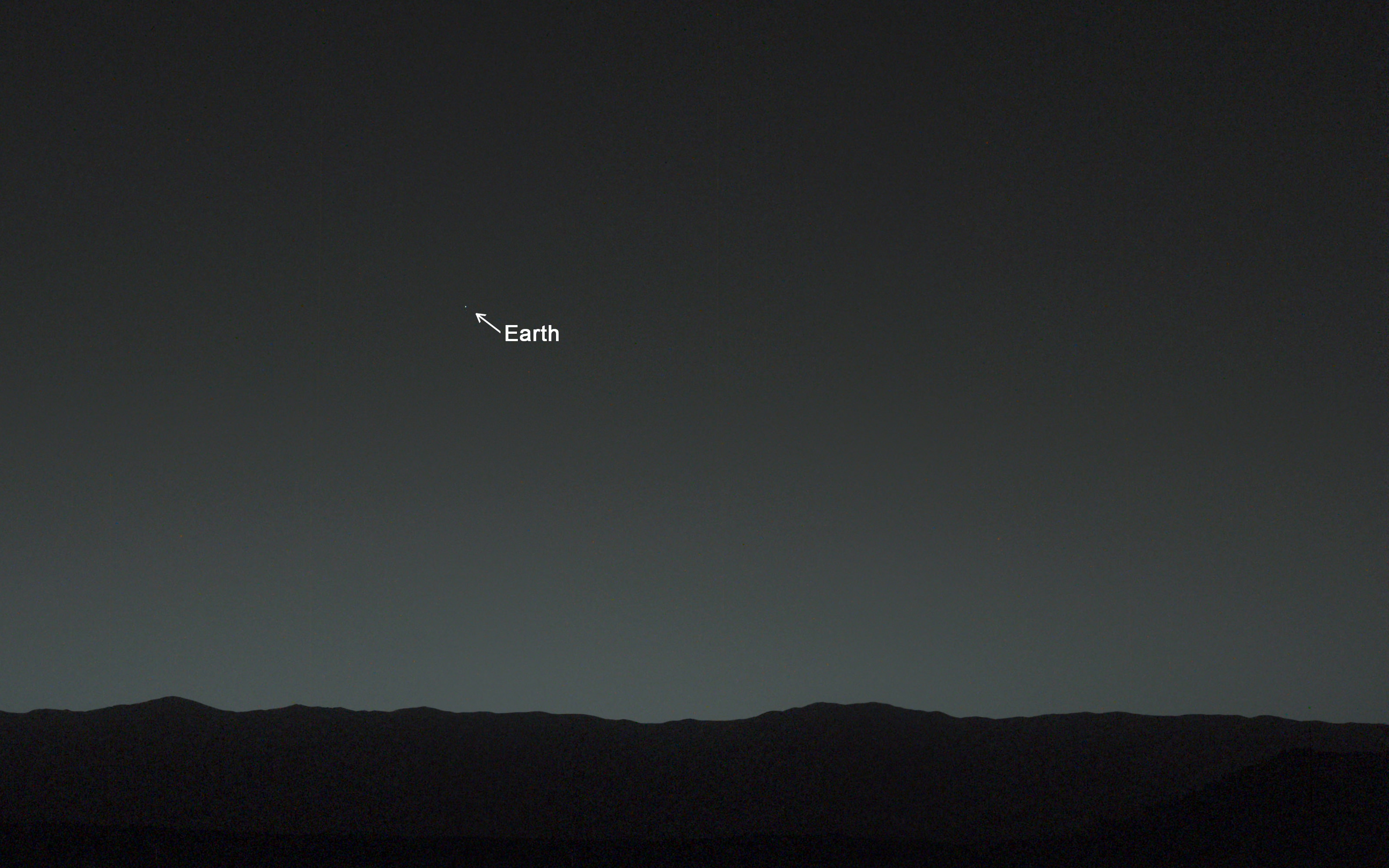
You are here! – As an Evening Star in the Martian Sky
This evening-sky view taken by NASA’s Mars rover Curiosity shows the Earth and Earth’s moon as seen on Jan. 31, 2014, or Sol 529 shortly after sunset at the Dingo Gap inside Gale Crater.
Credit: NASA/JPL-Caltech/MSSS/TAMU
See more imagery of the Earth and Moon below!
Story updated[/caption]
18 months into her mission to discover a habitable zone on the Red Planet, NASA’s Curiosity rover has at last looked back to the inhabited zone of all humanity and snapped her 1st image of all 7 Billion Earthlings living on the Home Planet.
“Look Back in Wonder… My first picture of Earth from the surface of Mars,” tweeted Curiosity today.
You are there! See yourselves in the spectacular imagery from the Red Planet’s surface at the ‘Dingo Gap’ inside Gale Crater – above and below.
Car sized Curiosity captured the evocative image of Earth as an evening star in the Martian sky just days ago on Jan. 31, 2014, or Sol 529, some 80 minutes after sunset.
And what’s more is that the evening sky view even includes the Earth’s Moon!
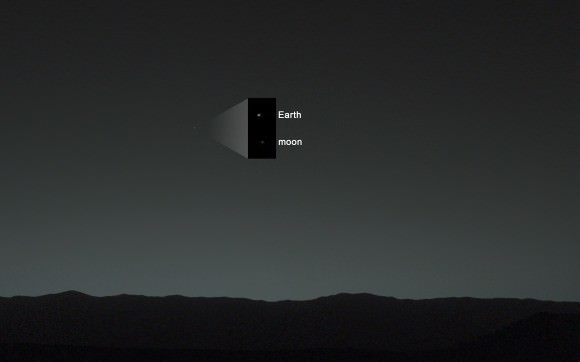
Earth shines brilliantly as the brightest beacon in the Martian twilight sky view taken from the 1 ton rovers current location at the edge of a sand dune dubbed the ‘Dingo Gap.’
“A human observer with normal vision, if standing on Mars, could easily see Earth and the moon as two distinct, bright “evening stars,” said NASA in a statement issued today.
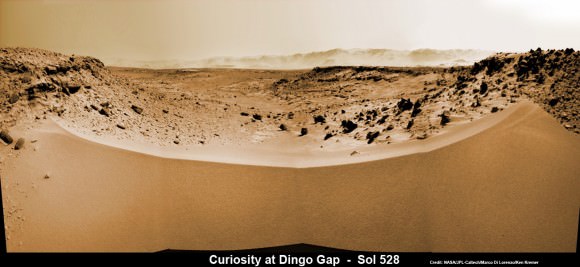
Curiosity’s View Past Tall Dune at edge of ‘Dingo Gap’ sand dune
This photomosaic from Curiosity’s Navigation Camera (Navcam) taken at the edge of the entrance to the Dingo Gap shows a 3 foot (1 meter) tall dune and valley terrain beyond to the west, all dramatically back dropped by eroded rim of Gale Crater. View from the rover’s current position on Sol 528 (Jan. 30, 2014). The rover team may decide soon whether Curiosity will bridge the dune gap as a smoother path to next science destination.
Credit: NASA/JPL-Caltech/Marco Di Lorenzo/Ken Kremer- kenkremer.com
Curiosity used both of her high resolution mast mounted color cameras to collect a series of Earth/Moon images flittering across the Martian sky.

Processing has removed the numerous cosmic ray strikes – see raw image below.
Right now Curiosity’s handlers are pondering whether to climb over the 1 meter tall sand dune and cross into the smooth terrain of the valley beyond the ‘Dingo Gap’ – as an alternate path to minimize damaging encounters with sharp edged Martian rocks that are puncturing holes and ripping tears into the robots six wheels.
To be clear, these are not the first images of the Earth from Mars orbit or Mars surface.
NASA’s Mars Exploration Rover Spirit imaged Earth from the surface in March 2004, soon after landing in Gusev Crater in January 2004.
Two of NASA’s other Red Planet explorers also imaged Earth; Mars Global Surveyor in 2003 and Mars Reconnaissance Orbiter in 2007.
More recently, NASA’s Cassini orbiter at Saturn spied the Earth and Moon during the Wave at Saturn event in July 2013 from a distance of 898 million miles (1.44 billion kilometers).
And still more images of the Earth from NASA’s Mariner 10 and Juno Jupiter orbiter in my recent planetary exploration story – here
The most famous and distant of all is the ‘Pale Blue Dot’ image of Earth taken by NASA’s Voyager 1 probe in 1990 from about 6 billion kilometers (3.7 billion miles) away.
Meanwhile, NASA’s sister rover Opportunity is exploring clay mineral outcrops by the summit of Solander Point on the opposite side of Mars at the start of her 2nd Decade investigating the Red Planet’s mysteries.
Stay tuned here for Ken’s continuing Curiosity, Opportunity, Chang’e-3, SpaceX, Orbital Sciences, LADEE, MAVEN, MOM, Mars and more planetary and human spaceflight news.
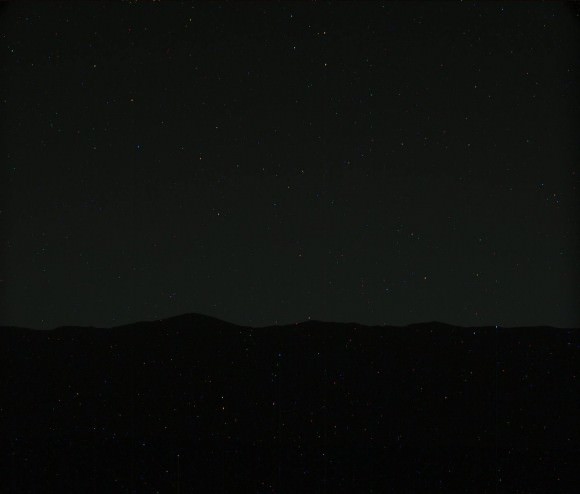


Heavy-Lift Rocket Launch Seen from Space
We all know what a big rocket launch looks like from the ground, but this is what it looks like from above the ground — 260 miles above the ground! The photo above was captured from the Space Station earlier today by NASA astronaut Rick Mastracchio, and it shows the contrail from a heavy-lift Ariane 5 that had just launched from ESA’s spaceport on the French Guiana coast: flight VA217, Arianespace’s milestone 250th launch carrying the ABS-2 and Athena-Fidus satellites into orbit.
Rick shared his view on Twitter with his nearly 39,000 followers, and now less than an hour later, we’re sharing it here. (Isn’t technology wonderful?)
For a more “natural” look, here it is reversed:
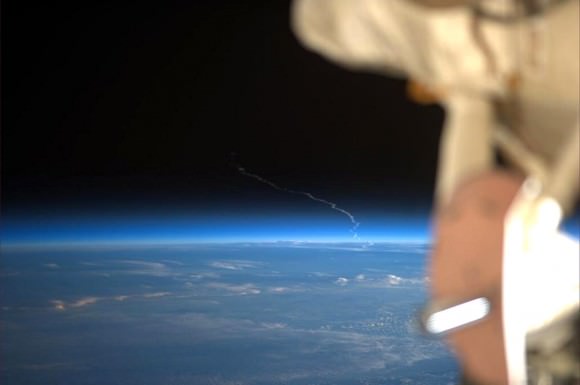
The ISS was in the process of passing over Costa Rica when the image was taken. The rocket launched from Kourou, French Guiana — about 2,175 miles (3,500 km) away. What a view!
For this and more great images from orbit follow Rick on Twitter @AstroRM.
Watch a video of the VA217 launch below:
The 250th launch performed by Arianespace lifted off from ESA’s spaceport in French Guiana, delivering a dual-satellite payload into geostationary transfer orbit: ABS-2 for global satellite operator ABS, and Athena-Fidus for the defense/homeland security needs of France and Italy. The flight lasted just over 32 minutes. (Source)


